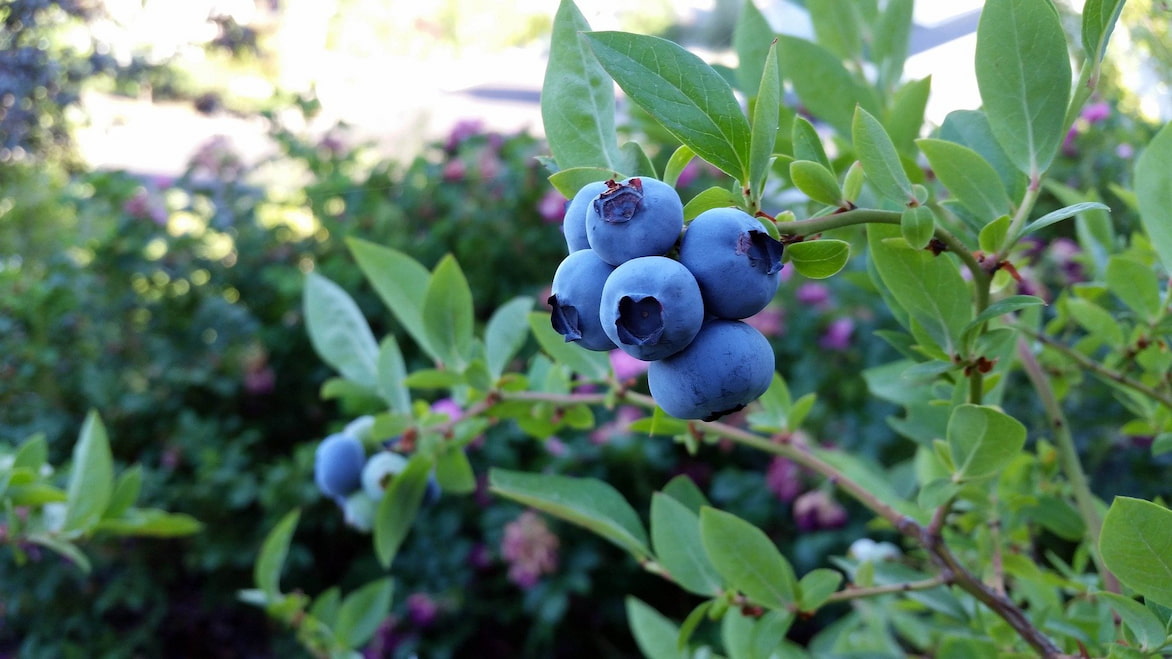
Blueberry: planting, pruning, and care
Contents
Blueberry in a nutshell
- This bush produces a profusion of succulent, blue-violet edible fruits.
- It boasts a flowering of white bell-shaped flowers tinged with pink, creating a stunning effect.
- Its extreme hardiness allows it to adapt to all regions.
- It thrives in borders, in beds, and even in pots.
- Its ornamental foliage turns a coppery red in autumn.
A word from our expert
Under our skies, the blueberry bush (Vaccinium) is found in two forms: wildly, the blueberry bush (Vaccinium myrtillus) is an undershrub that grows in the sparse woods of medium mountains, mainly in the Vosges, the Alps, and the Massif Central. It forms a dense clump that rarely exceeds 50 cm. In our gardens, we prefer to cultivate the bush blueberry (Vaccinium corymbosum), also known as the American blueberry, which can reach up to 2 metres for certain varieties. It produces a profusion of fruits that are larger than those of the wild blueberry.
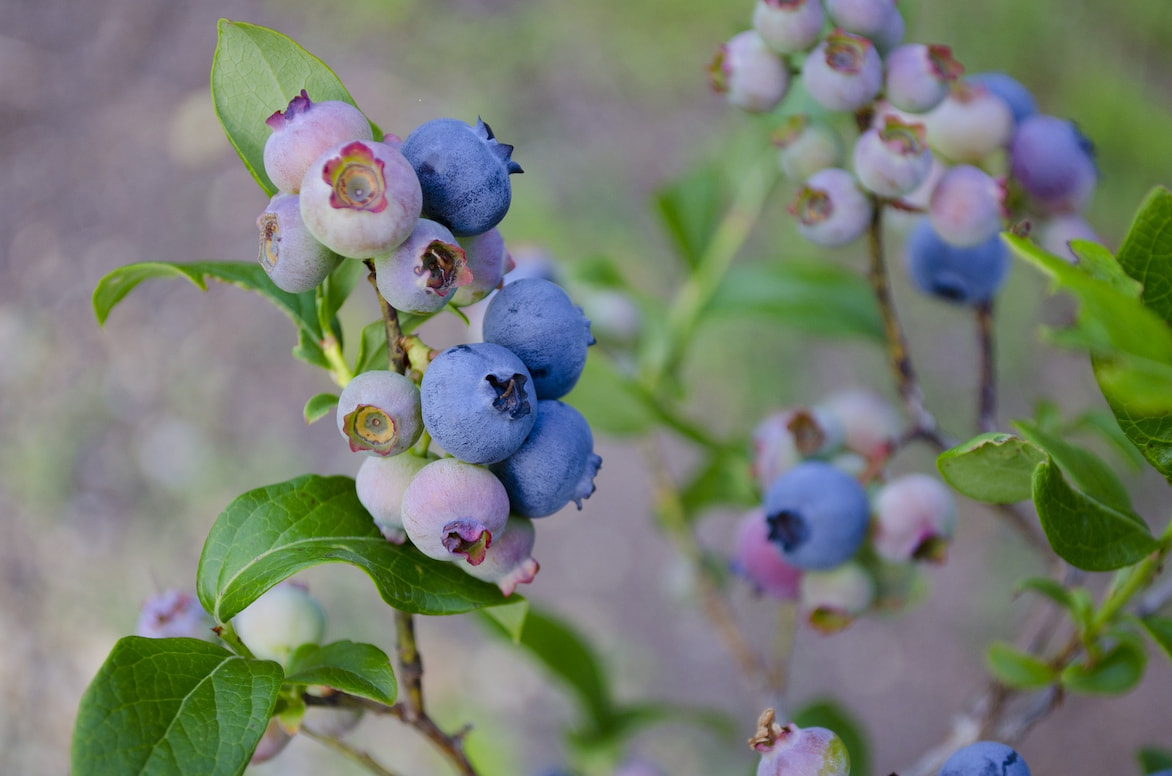
A small bush with semi-evergreen foliage, the blueberry bush is also notable for its lovely bell-shaped white flowers and its foliage tinged with coppery red in autumn.
Growing rapidly, the blueberry bush is very hardy due to its origins. It thrives in acidic, light soils rich in humus.
Botany and description
Botanical data
- Latin name Vaccinium corymbosum
- Family Ericaceae
- Common name Blueberry bush, American blueberry or giant blueberry
- Flowering spring
- Height up to 2 metres
- Exposure sunny or partial shade
- Soil type acidic
- Hardiness Down to -20°C
The Vaccinium corymbosum belongs to the cosmopolitan family of Ericaceae, which includes well-known plants such as the strawberry tree, rhododendron, azalea, kalmia, and ferns. It is safe to say that this plant thrives in acidic soil.
The name blueberry comes from Vaccinium myrtillus, the wild bilberry that grows in our mountainous regions, from eastern France to the Alps, not forgetting the Massif Central. This wild bilberry only grows at an altitude of around 1000 metres.
As for the blueberry (Vaccinium corymbosum) that we cultivate in our gardens, a close cousin of our wild bilberry, it is native to North America. Selected by American botanist Frédéric Coville in the early 19th century, it has been cultivated since 1920 on the North American continent and was introduced to Europe in the 1930s. It has only been cultivated in France since 1985.
Other species of blueberries are cultivated elsewhere. In Canada, Vaccinium angustifolium is mainly found. On the American continent, varieties have adapted to higher temperatures, such as Vaccinium asheii (rabbiteye), ideal for southern France, or hybrids of Vaccinium corymbosum with even more limited cold requirements.
Overall, to facilitate the exit from winter dormancy, most Vaccinium corymbosum require cold temperatures below 8 °C.
The blueberry bush has many advantages in the garden, but the primary one is the harvest of its beautiful blue-purple fruits, almost black for some varieties. Unlike wild bilberries, cultivated blueberries have a rather white flesh that grows in clusters of juicy, firm, waxy berries, with a taste that can be sweet or tangy. Each spherical berry weighs between 2 and 3 g and can be eaten raw, in salads, or cooked in jams, pies, sorbets, syrups, or even in savoury dishes alongside game or salads. The small berries of Vaccinium corymbosum (which grow in clusters!) ripen from late June to September, depending on the region. To harvest them, one must be patient, as blueberries are picked one by one, while wild varieties can be harvested with a comb.
It is worth noting that the first berries appear on branches that are at least 2 years old.
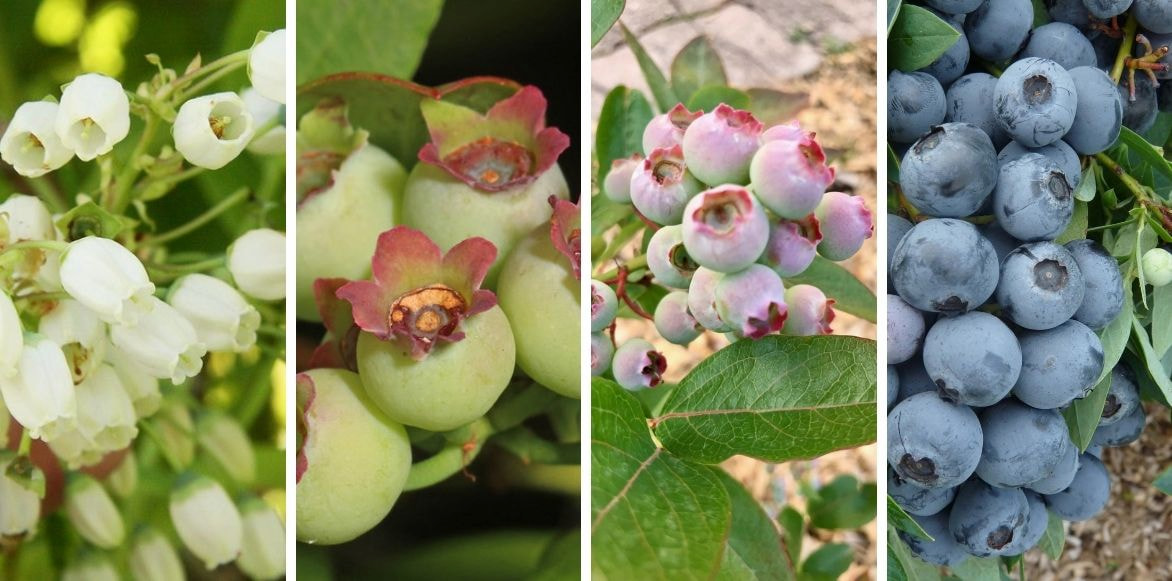 The blueberry bush from flower to fruiting
The blueberry bush from flower to fruiting
These berries are rich in vitamins A, B, and C, iron, and calcium, as well as antioxidants (flavonoids) and anthocyanins that help combat cellular aging. They are also low in calories as they are not very sweet.
While the fruiting of the blueberry bush explains its increasing presence in gardens, its flowering is equally impressive. Indeed, the American blueberry is covered in spring, from April to June, with pendulous clusters of small, waxy, bell-shaped white flowers, slightly tinged with red to pink. Abundant, the flowers appear above the foliage.
As for the foliage, it is very decorative in a border or a bed. A beautiful bright green after the bud burst period, the oval, veined leaves, measuring 5 to 10 cm long, become darker during the summer. Then, when autumn arrives, they take on lovely copper-red to purple hues before partially falling.
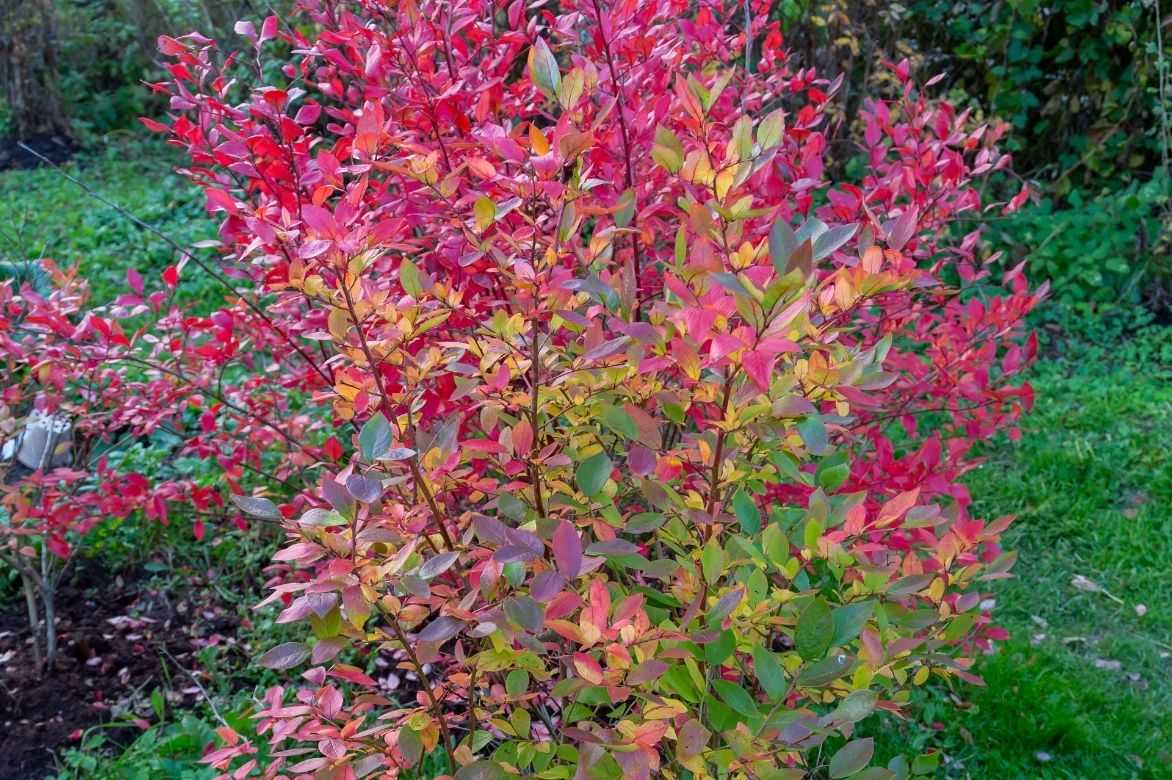 In autumn, the foliage of the blueberry bush turns copper-red
In autumn, the foliage of the blueberry bush turns copper-red
Over time, the garden blueberry becomes a bush that can reach 2 metres in height for some varieties. However, on average, it rarely exceeds 1 m to 1.5 m in all directions. Composed of highly branched stems that lignify with age, the blueberry bush has a bushy, upright, fairly dense, and vigorous habit. Its growth is rapid, provided it is given the right growing conditions. Due to its size, the blueberry is typically grown in borders or beds, sometimes in hedges for the taller varieties. Pot cultivation is also possible on a terrace.
Read also
Choosing blueberry varietiesThe main varieties
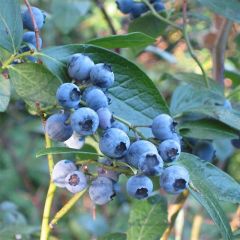
Vaccinium Blue Crop - Blueberry
- Flowering time June
- Height at maturity 1,30 m
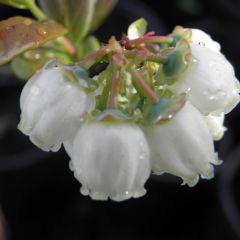
Vaccinium Patriot - Blueberry
- Flowering time June
- Height at maturity 1,20 m
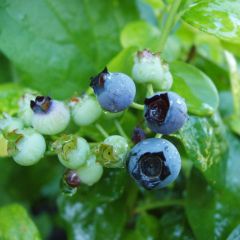
Vaccinium corymbosum Blue Gold - American Blueberry
- Flowering time June
- Height at maturity 1,50 m
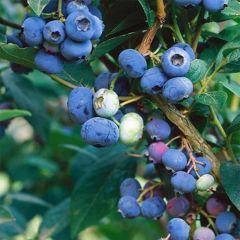
Vaccinium corymbosum Brigitta Blue- American Blueberry
- Flowering time June
- Height at maturity 1,20 m
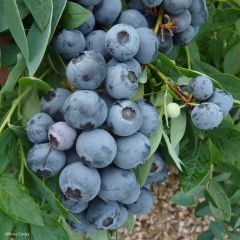
Vaccinium corymbosum Sunshine Blue- American Blueberry
- Flowering time June
- Height at maturity 1,50 m
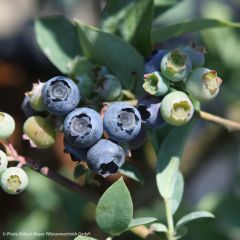
Vaccinium Powder Blue - Organic Blueberry Bush
- Flowering time June, July
- Height at maturity 1,80 m
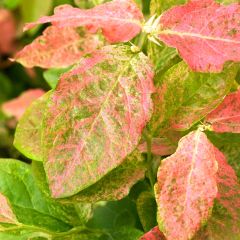
Vaccinium corymbosum Flamingo- American Blueberry
- Flowering time June
- Height at maturity 1,30 m
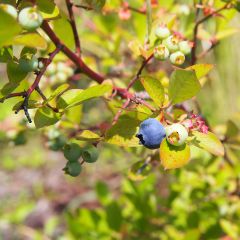
Vaccinium corymbosum Yello!Berryblue- American Blueberry
- Flowering time June, July
- Height at maturity 1,25 m
Discover other Blueberry bush
View all →Available in 0 sizes
Available in 1 sizes
Available in 1 sizes
Available in 1 sizes
Available in 1 sizes
Available in 3 sizes
Available in 1 sizes
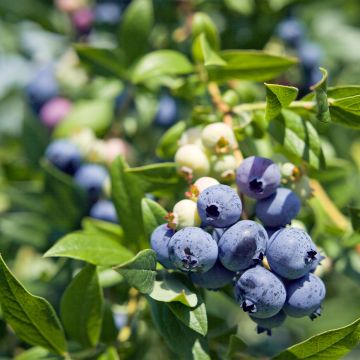
Available in 2 sizes
Available in 1 sizes
Available in 1 sizes
Planting blueberries
Where to plant?
Naturally, the blueberry bush grows in acid soils. As it belongs to the Ericaceae family, the blueberry shrub requires soil with a pH between 4 and 5.5, with a maximum of 6, that is light and rich in humus. It should be able to retain moisture while being sufficiently draining. This is because the blueberry bush absolutely detests clayey and overly compact soils, as well as calcareous soils.
To increase soil acidity, you can incorporate heather soil during planting or mulch the soil with pine bark.
Choose its location carefully as the blueberry bush does not like to be moved.
In terms of light, the blueberry bush enjoys partial shade but can also thrive in full sun.
When to plant?
Ideally, the blueberry bush should be planted in September or October. This allows it to take advantage of the moisture of the season and the still mild temperatures. It will have time to settle in well during winter to bear fruit by June.
If not, planting can be done in spring, but regular watering will be necessary. And you will have to wait until the following year to taste the first berries.
How to plant?
Even though there are self-fertile varieties of Vaccinium, it is preferable to plant 2 to 3 blueberry bushes next to each other, preferably of different varieties to encourage pollination. If space is limited, opt for a self-fertile variety. Think carefully about the location as the blueberry bush can bear fruit for around fifty years.
- Loosen the soil and carefully remove stones and adventive plants.
- Dig deep holes of 50 cm, spaced at least 1 m apart.
- Fill the planting hole with heather soil, possibly mixed with compost made from fallen leaves and pine needles. You can mix it with garden soil. You may also add a bit of crushed horn and well-decomposed manure.
- Place the blueberry bush in the hole and cover with soil, ensuring the collar level is respected.
- Firm the soil and mulch with pine bark.
- Water generously.
In pots, you need to choose a container of at least 60 x 40 cm filled with a layer of gravel or clay balls. Fill your pot with heather soil mixed with a bit of compost or potting soil at a ratio of 1/10. Watering should be regular in summer, and the pot can remain outside, as the blueberry bush is particularly hardy.
→ Also read our tutorial How to plant a blueberry shrub?
Caring for the blueberry bush
- Apply heather soil fertiliser or special fruit tree fertiliser in March
- Water regularly in summer with rainwater, which is less hard than tap water. In summer, or even in autumn, the blueberry bush must not suffer from a lack of water, which would jeopardise its fruiting.
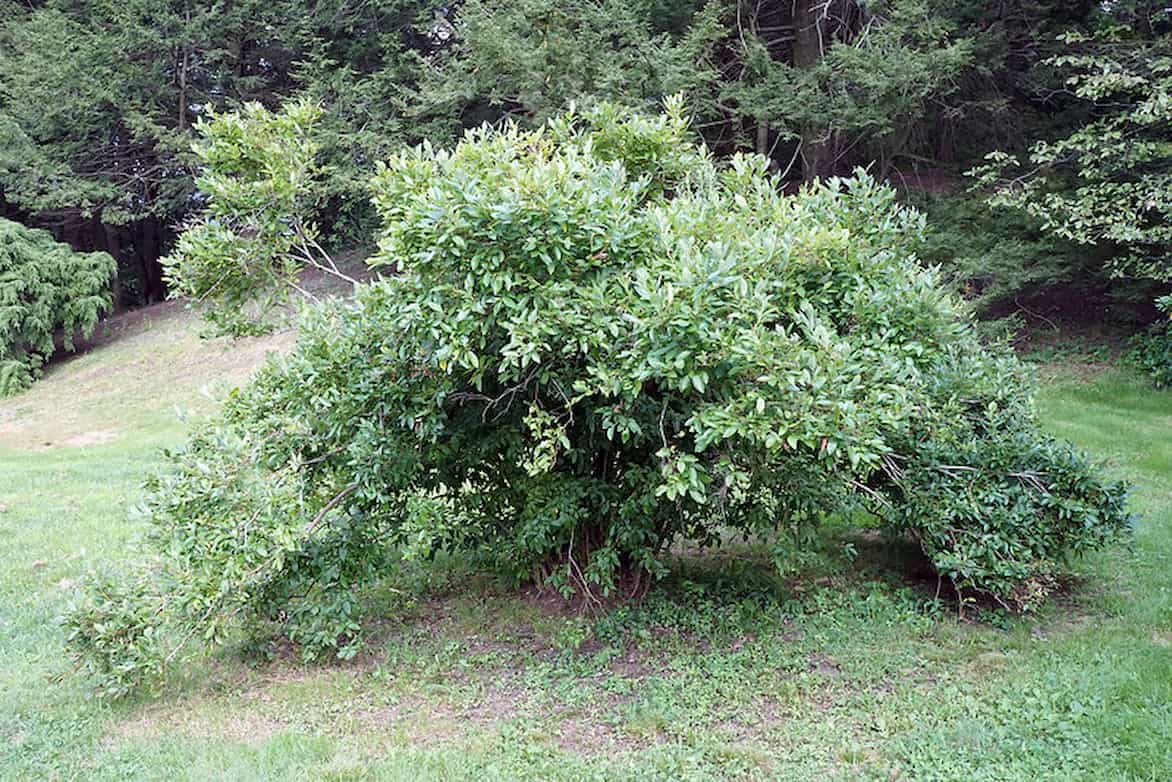 In summer, the blueberry bush needs to be watered
In summer, the blueberry bush needs to be watered
- Renew the mulch of shredded pine bark or cocoa beans if necessary. You can also provide it with a mulch of ferns.
Diseases and pests
The blueberry plant is not very susceptible to fungal diseases and other pests if its growing conditions are suited to its needs. However, anthracnose, rust, and grey mould can weaken it. These diseases can be avoided by ensuring that the foliage is not watered, spacing the plants appropriately, and spraying a horsetail manure as a preventive measure once a week.
To deter pests such as the armyworm or whiteflies, nettle manure proves effective. Naturally, promoting biodiversity and attracting the natural predators of these pests is the best solution.
As for the birds that love the blueberries, they can be discouraged by placing a protective net.
→ Learn more in our article: Diseases and pests of the blueberry plant
Pruning blueberries
Pruning is recommended to encourage fruiting of the blueberry bush. Indeed, the branches of this bush do not produce berries for more than 3 to 4 years, and each branch only bears fruit on wood that is 2 years old or from the current year. Furthermore, the largest and finest berries are born on the most vigorous branches.
Therefore, pruning is necessary every 3 to 4 years to remove branches that have become unproductive or show signs of weakness or fragility. It also helps to eliminate dead branches.
How to do it? Using previously disinfected pruning shears, cut the branches older than 4 years down to the ground. The other branches that are 2 years old or younger should be cut to 30 cm above a node. About ten branches are sufficient to achieve good fruiting. This operation takes place in February.
The propagation of the blueberry bush
Lthe best way to divide a blueberry bush is by taking the suckers that appear at the base. Using a spade, separate it sharply from the mother plant. Gently, loosen the roots, then prepare the roots. Plant immediately in loosened soil.
Propagation by cuttings also works quite well, either with a herbaceous cutting in June or a lignified cutting in October-November.
For the herbaceous cutting:
- Cut green segments of 20 cm
- Plant in a mixture of heather soil and moistened sand
- Water and place in a shaded, sheltered area
- Moisten the mixture daily
- After 5 to 6 weeks, transplant into individual pots.
- Place them in a nursery until the following autumn
- Transplant into the ground in October
For the lignified cutting:
- Cut a 20 cm branch from the previous year
- Plant in a mixture of heather soil and sand
- Cover tightly with a plastic bag
- Occasionally take it out into the sun, removing the plastic
- Transplant into the ground after 2 years.
→ Learn more about the propagation of the Blueberry Bush in our tutorial sheet!
Usage and association
Blueberries can be planted in low hedges to define a vegetable garden. By multiplying the varieties, you facilitate pollination and increase your chances of achieving abundant fruiting.
You can also associate them with cranberries (Vaccinium macrocarpon) or red bilberries (Vaccinium vitis-idaea) that require the same growing conditions. This way, you will create a hedge or a bed brimming with small fruits.
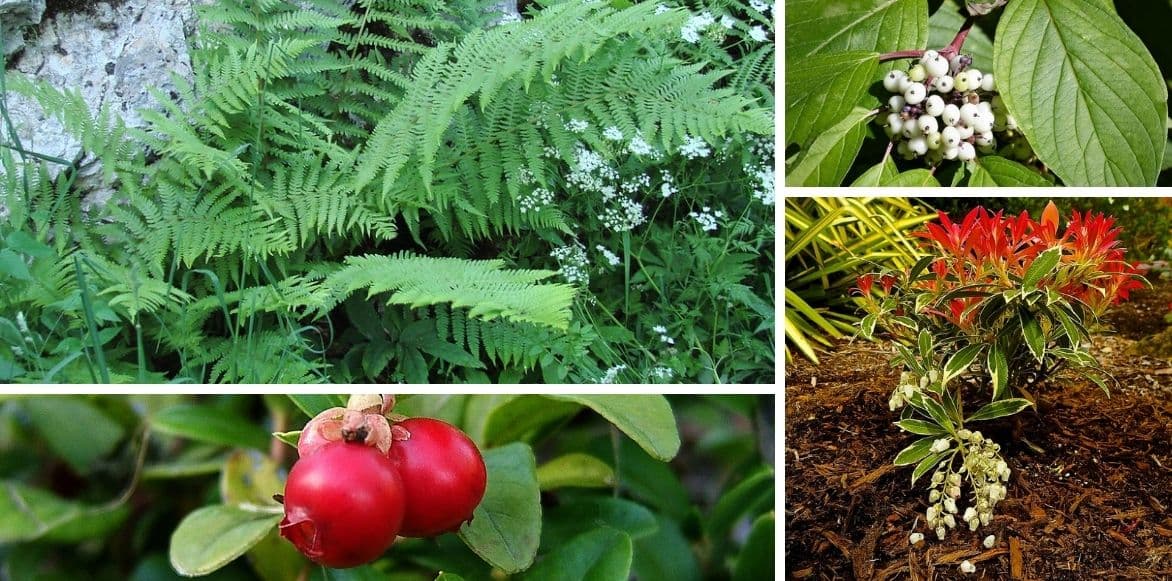
The blueberry pairs very well with tree ferns, the white dogwood (Cornus alba), cranberries (Vaccinium macrocarpon), and Pieris japonica ‘Flaming Silver’
Due to its ornamental aspect from its flowering and autumn colours, the blueberry can be perfectly combined in a decorative bed alongside other ericaceous plants such as rhododendrons, azaleas, camellias, and tree ferns. They will also look stunning when paired with a white dogwood (Cornus alba), with Daphnes, or even a Japanese Andromeda (Pieris japonica ‘Flaming Silver’) with its magnificent spring foliage and white flowering in panicles.
Harvesting and storing blueberries
The harvest of blueberries
About a week after turning dark blue, blueberries reach ripeness and can be picked. A reddish peduncle is also a sign of ripeness. The berries should detach easily. If they resist, postpone the picking and come back the next day! The fruits are collected by hand, one by one, preferably early in the morning.
The storage of blueberries
Like most small fruits, blueberries can be stored for a week in the vegetable drawer of the refrigerator. Place them in a non-airtight container, for example, on a paper towel.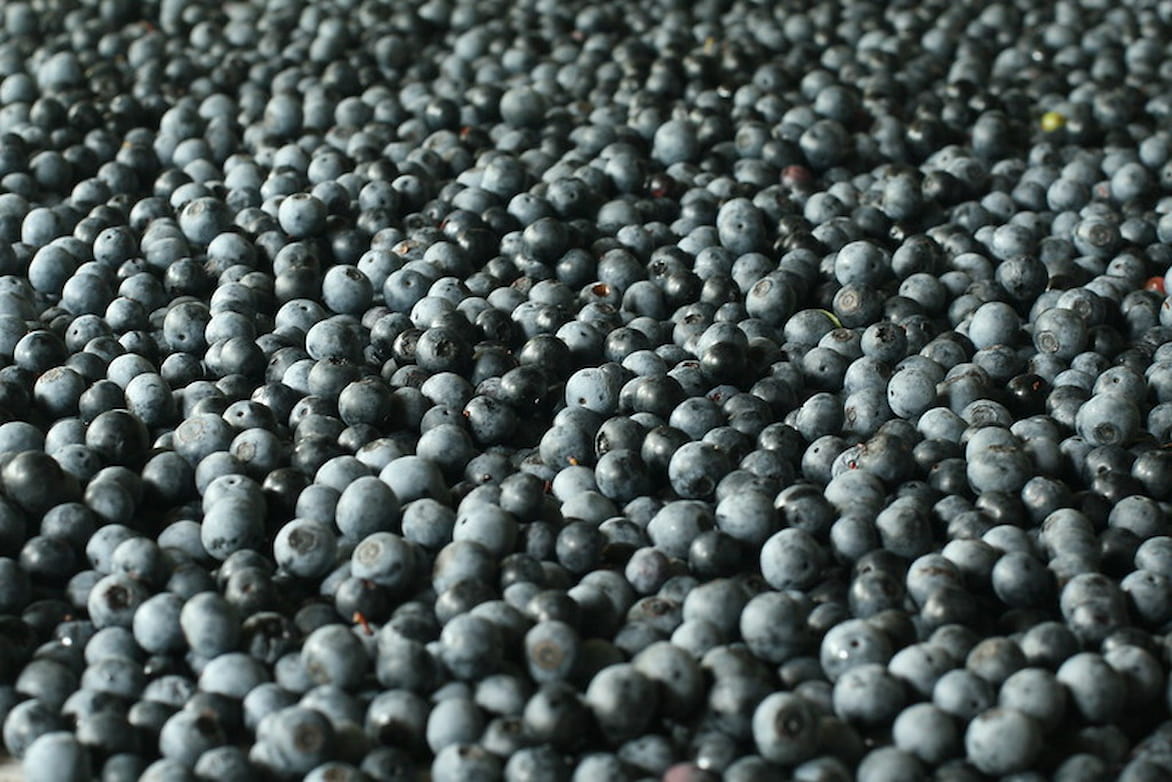
Blueberries also freeze very well. Spread them on a tray in the freezer, and once frozen, transfer them to a freezer bag.
They can also be transformed into jams, jellies, coulis, juices, or sorbets.
Blueberries can also be dried, either naturally in the sun on drying racks, in a low-temperature oven, or in a dehydrator. Dried blueberries can be consumed as they are or incorporated into cakes or muffins.
Did you know?
Depending on the regions, blueberries go by different names. In Lorraine, when people go to pick wild blueberries, they head to the brimbelles picking. In the Massif Central, they refer to them as airelles. In the Vosges, the Vosges blueberry is cultivated. And in Canada, they are called bleuets.
More and more regions are regulating the harvest of wild blueberries.
For further reading
-
- If you want to create a hedge of soft fruits: Nearly 300 varieties to discover
- Our buying guide: Which blueberry bush to choose?
- Our article: Growing blueberries
- Two varieties to discover: Decorative-leaved blueberry bushes
- Discover Olivier’s experience: I missed out for you… the American blueberries
- Learn more with Pascale on the blog: Growing superfruits is possible
- Subscribe!
- Contents































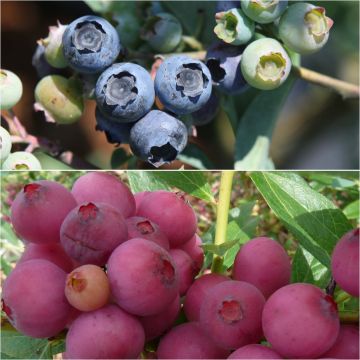
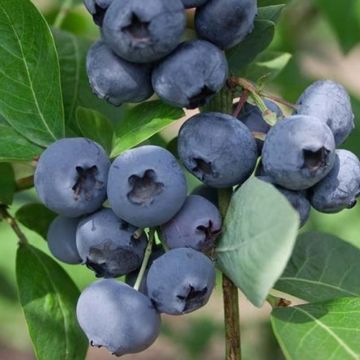
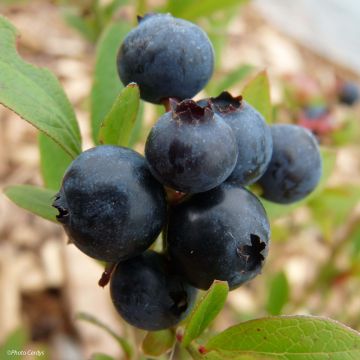
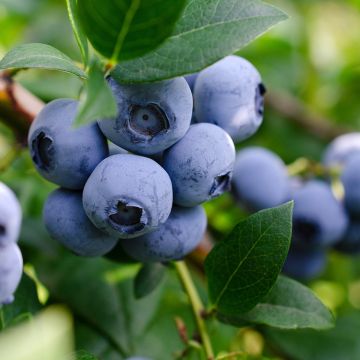
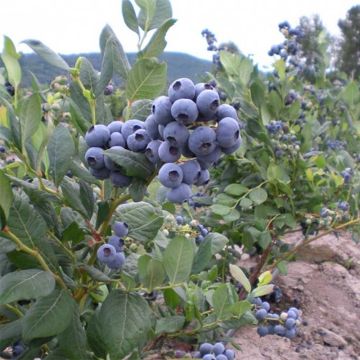
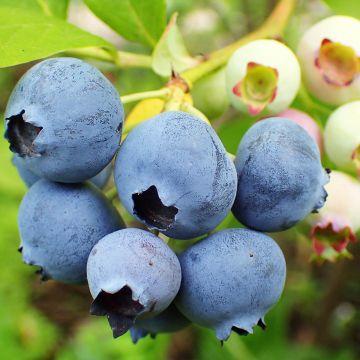
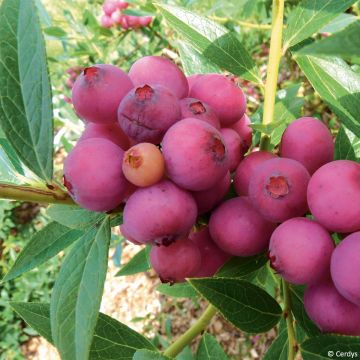
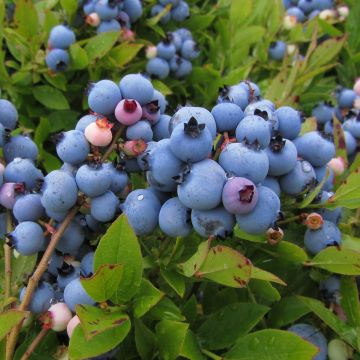
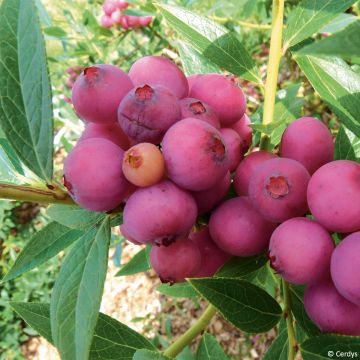
Comments